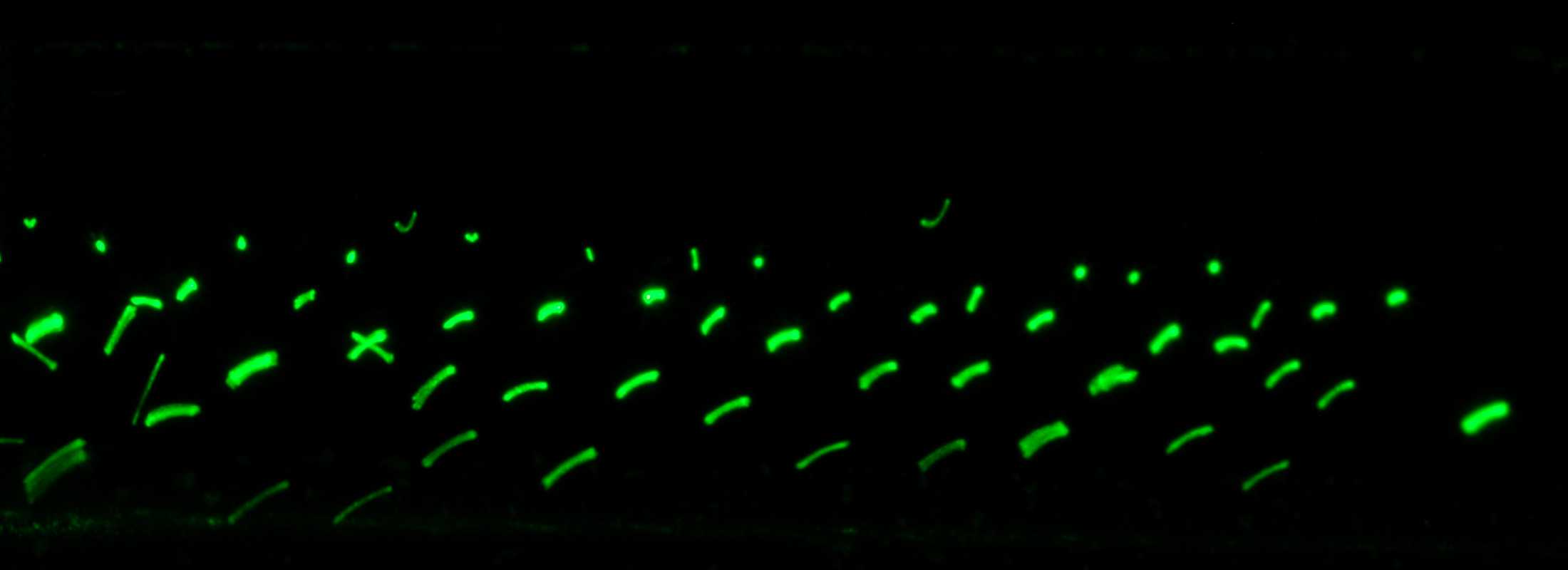Life in the trap
Move our head a little closer now to already trapped particles. Bright eye then can see this view:

“Living” flour.
Curved line! Trapped grains oscillate very rapidly and because of the slowness of our human eyes, we are not able to track movement smoothly. The movement of grains then blurs in such curved line. Lets make an agreement now, that such trapped grains we will call as “living” flour. On the other hand the term “dead” grains will stand for those particles, that escaped from the trap or touched a wire and stuck on it.

“Living” flour.
When looking at the ”living” flour, notice several things:
- Individual lines are at different heights. This is due to the fact, that each particle has different mass and unrelenting enemy called gravity does its work. Another important factor is how much we charged the particle. Bigger charge is better to hold it trapped and defies its mortal enemy, gravity.

- Above are located thicker lines than below. The laser beam is very thin, thus I put a lens in front in order to make beam broader. The closer to the edge we are, the dimmer light we observe. The second reason is the bigger velocity of grains at the bottom of the trap. The particles then remain in one place for shorter amonunt of time and to the camera comes less light from such place, so it looks darker.
- Most particles are trapped at the bottom of the trap. This is again due to gravity, which tries to drag all “living” particles of the flour down. You may have noticed that some valiant grains fight very bravely and remain on the sides of the trap, the most valiant grains even remain on the top half of the trap. You can recognize it from the fact, that their “paths” are upside down.


View obliquely from above to ”living” flour, lines are of different lengths.
- Individual lines are of different lengths. The explanation is a bit more subtle to the imagination, but you could saw it already in the first picture. The closer is trapped grain to the center of the trap, the shorter path it follows. There is simply less amount of space.
The following video shows seven times slower “living” grains of the flour. You can see, that they are quite “active”. Now realize, that in fact they are moving seven times faster!
Just for curiosity, every grain of flour can make it back and forth fifty times in one second! Do you know why? Try to write me your explanation in the comments below. ![]()